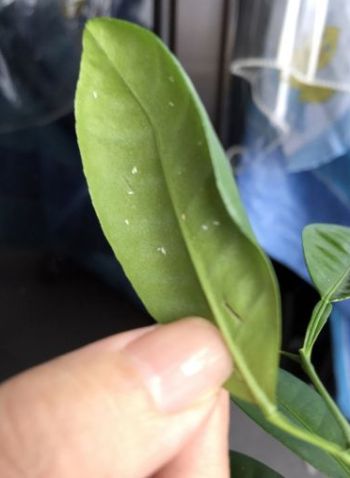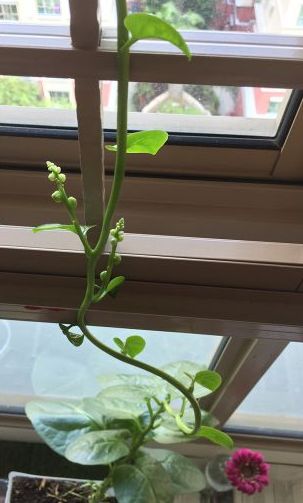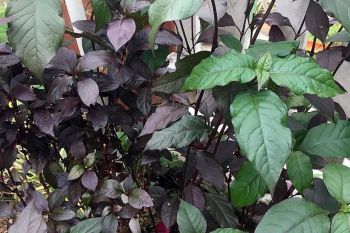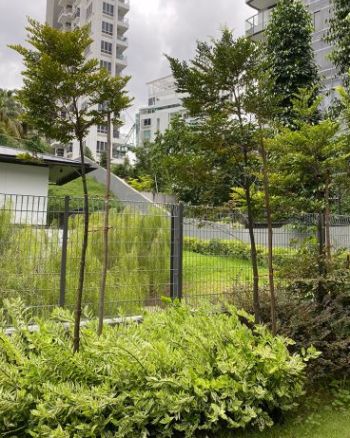Gardening FAQ #15 – What You Need To Know
In this article, we share how to handle whiteflies and caterpillars infestation, climber plants, fertilization and much more. Let’s go through the common gardening FAQ, problems and solutions you need when growing your plants either indoor and outdoor.
Lime plant infested by whiteflies and caterpillars – a common question in gardening FAQ
 I have grown a few lime trees from seeds for about a year. They have grown well and have luxuriant leaves until about two months ago, when I started to notice numerous minute white insects around the soil, near the base of the trees and leaves. I thought they were fungus gnats, so I tried moving the trees to a spot where there is more continuous sunlight for about a week. The number of insects decreased tremendously. I moved the trees back to my balcony where there is only indirect sunlight in the afternoon. Now, the problem has returned and there are numerous white insects flying around the base of the trees and resting on the underside of the leaves. The leaves also appear to be bitten off. What should I do? Also, how long does it take for a lime tree to bear fruit?
I have grown a few lime trees from seeds for about a year. They have grown well and have luxuriant leaves until about two months ago, when I started to notice numerous minute white insects around the soil, near the base of the trees and leaves. I thought they were fungus gnats, so I tried moving the trees to a spot where there is more continuous sunlight for about a week. The number of insects decreased tremendously. I moved the trees back to my balcony where there is only indirect sunlight in the afternoon. Now, the problem has returned and there are numerous white insects flying around the base of the trees and resting on the underside of the leaves. The leaves also appear to be bitten off. What should I do? Also, how long does it take for a lime tree to bear fruit?
The lime plant is a sun-loving shrub and needs to be grown under direct sunlight for at least four hours daily. Under insufficient light, the plant can become weak and susceptible to pest attacks.
Fungus gnats – black tiny flies – can be a nuisance and they are associated with wet organic plant growing mixes. Growing the plant in a sunny place and letting the surface of the growing media dry out a little before watering again may help to reduce the infestation.
As for the small, white flying insects, they appear to be a sucking insect called whitefly. You may want to use neem oil or a matrine-based organic pesticide which you can purchase via online shopping platforms. Repeated applications are needed to keep the pest infestation low.
For the damaged portions, they may be caused by caterpillars. The lime plant is a host plant for the beautiful Lime and Common Mormon butterflies. You can remove the caterpillars from your plants and rear them to maturity separately before releasing them.
If the plants are grown from seeds, it may take at least a year before they produce fruit. Bear in mind that this also depends on the vigour of the plants.
Ceylon Spinach is a climber
 My daughter picked up the seed of this plant some time ago and grew it in a pot made from a recycled milk carton. Initially, the plant looked like a tree sapling but, lately, it grew really tall by wrapping itself around the window grilles. The leaves are round and the lowest ones are huge, bigger than my palm. The plant seems to have flowered, with the blooms quite tiny and whitish. What is this plant?
My daughter picked up the seed of this plant some time ago and grew it in a pot made from a recycled milk carton. Initially, the plant looked like a tree sapling but, lately, it grew really tall by wrapping itself around the window grilles. The leaves are round and the lowest ones are huge, bigger than my palm. The plant seems to have flowered, with the blooms quite tiny and whitish. What is this plant?
The plant is the green version of the Ceylon Spinach whose botanical name is Basella alba.
The young growing tips of this plant are being marketed as “di huang miao” in local markets. The larger leafy shoots are sold as a leafy vegetable too.
The plant can grow under direct or filtered sunlight and in moist, well-drained soil. One of the way to control the sunlight is to use growing lights. You can read up my post on growing lights fixture where I show you the top 4 things you need to know.
It is a climber and will send out twining stems which can be cut back and harvested for cooking. You may want to move it into a larger pot to support its growth. If you want to do such transplant easily, you should explore using grow bags. See my other post on grow bags.
Joseph’s Coat needs sufficient sunlight to retain foliage colour
 I bought a pot of ruby leaf. Its leaves were brilliant red and I thought it would look good for my fence. I transplanted it to the ground. But the leaves soon turned brown and then green. Why did this happen?
I bought a pot of ruby leaf. Its leaves were brilliant red and I thought it would look good for my fence. I transplanted it to the ground. But the leaves soon turned brown and then green. Why did this happen?
The plant is botanically known as Alternanthera dentata and its common names include Joseph’s Coat and Upright Calico Plant.
It appears the plant may not be receiving sufficient sunlight, hence the leaves fade to green.
The plant grows best under direct sunlight for at least four hours daily to bring out and retain its characteristic vivid purple hue.
If you want to grow this indoors under a controlled environment, read our post on Guide to Growing Tents.
Trees will benefit from mulching and fertilising
 I have several Diospyros buxifolia trees in my garden. However, they seem to be sparse and the branches are not growing at the bottom. I have sprinklers attached and the trees get a good amount of water and sun. What can I do to save them?
I have several Diospyros buxifolia trees in my garden. However, they seem to be sparse and the branches are not growing at the bottom. I have sprinklers attached and the trees get a good amount of water and sun. What can I do to save them?
To help your trees grow better, you may want to clear away some of the shrubs that are growing beneath them as they may be competing with the trees for nutrients and water.
A clear tree root zone should be created where you apply a layer of dried leaves.
This serves as a mulch to keep the roots cool and moist as well as help build a root microbial community for the trees to grow better.
You may also want to apply slow-release, balanced fertiliser pellets to boost the growth of your trees.
The trees are not likely to produce any new lower lateral branches. They will likely continue to grow taller and put out new lateral branches as they grow upwards.
As such, it is important to understand the trees’ natural growth habit and avoid pruning lateral branches unnecessarily.
